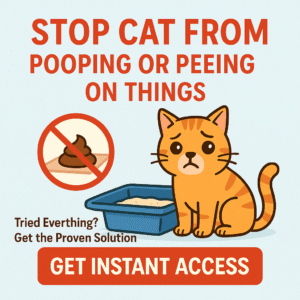High calcium levels, also known as hypercalcemia, can pose serious health risks for cats. Left unmanaged, it can lead to kidney stones, urinary crystals, vomiting, constipation, weakness, or even life-threatening complications. While it’s essential to work closely with your veterinarian to identify and treat the underlying cause, nutrition plays a crucial role in managing and supporting cats with high calcium. Here’s how to feed your cat wisely and safely when hypercalcemia is a concern.
Understanding High Calcium (Hypercalcemia) in Cats
Hypercalcemia means there’s too much calcium circulating in your cat’s blood. The most common causes include:
- Chronic kidney disease (CKD)
- Parathyroid gland disorders
- Certain cancers (like lymphoma or adenocarcinoma)
- Vitamin D overdose (accidental ingestion or excessive supplementation)
- Idiopathic (no known cause)
Symptoms can be subtle or severe, including increased thirst and urination, decreased appetite, vomiting, constipation, lethargy, or urinary issues. Diagnosis and management always start with your vet.
Dietary Goals for Cats with High Calcium
- Control dietary calcium: Choose foods with moderate to low calcium levels. Avoid foods or treats that add extra calcium, like dairy, bones, or some supplements.
- Reduce vitamin D: Since vitamin D aids calcium absorption, avoid foods with excessive vitamin D unless prescribed by your vet.
- Support kidney and urinary health: Wet/canned foods are best—they increase hydration, dilute urine, and help prevent stones or crystals.
- Balanced phosphorus and magnesium: The right levels help support the kidneys and urinary system, especially if your cat is at risk of stones.
- High-quality, moderate protein: Maintain lean muscle while supporting organ health—especially important if kidney function is affected.
Best Cat Food Features for High Calcium
- Low to moderate calcium: Aim for foods with calcium content around 0.5–0.9% on a dry matter basis. (Check the label or ask the manufacturer for specifics.)
- Moisture-rich (wet) foods: Canned food helps prevent dehydration, constipation, and urinary complications.
- Minimal vitamin D supplementation: Only feed vitamin D-fortified foods if recommended by your vet.
- Low in dairy and no bone additives: Avoid treats or foods containing cheese, milk, yogurt, or bone meal.
- Balanced for kidney support (if relevant): Many cats with high calcium also have kidney disease, so a renal diet may be best (only under veterinary supervision).
Recommended Cat Foods for High Calcium
1. Hill’s Prescription Diet k/d (Wet & Dry, Veterinary Only)
- Formulated for kidney health, which often co-occurs with hypercalcemia.
- Controlled calcium, phosphorus, and vitamin D.
- Available by prescription—always use under veterinary guidance.
2. Royal Canin Renal Support (Wet & Dry, Veterinary Only)
- Supports kidney and urinary health, with controlled calcium and minerals.
- Palatable and moisture-rich for picky or sick cats.
- Veterinary prescription required.
3. Purina Pro Plan Veterinary Diets NF Kidney Function (Wet & Dry, Veterinary Only)
- Moderate protein and low calcium, phosphorus, and vitamin D.
- Designed for cats with kidney issues or risk of mineral imbalances.
- Available in wet and dry; wet is usually best for hydration.
4. Weruva Cats in the Kitchen (Wet)
- Moisture-rich and moderate in calcium (check specific flavors for nutritional details).
- High-quality animal protein, minimal fillers, and no added dairy.
- Useful for cats who need high hydration and moderate minerals.
5. Wellness CORE Grain-Free (Wet)
- High animal protein, grain-free, and moderate in calcium (always check the nutritional label).
- No added dairy or bone meal; focus on real meat and moisture.
- Good for cats needing urinary support and minimal extra calcium.
Foods and Ingredients to Avoid
- Dairy products (milk, cheese, yogurt, treats with dairy)
- Bone meal or calcium-fortified treats
- Foods with excessive vitamin D or fish liver oils (unless prescribed)
- Supplements not approved by your vet
- Human foods high in calcium (such as sardines with bones or calcium-fortified drinks)
Practical Feeding Tips for Cats with High Calcium
- Transition foods slowly: Always change diets over 7–10 days to avoid stomach upset.
- Encourage hydration: Provide multiple water bowls or a cat water fountain; wet food is ideal.
- Feed small, frequent meals: This supports digestion and can reduce GI upsets.
- Keep treats to a minimum: Only use treats that fit your cat’s new dietary needs and avoid anything high in calcium or vitamin D.
- Monitor weight and appetite: Weigh your cat weekly and report any loss or gain to your vet.
- Regular checkups: Ongoing blood tests and urinalysis are crucial to track calcium and kidney function.
When to See the Vet
- If your cat’s appetite drops or they stop eating
- If you notice vomiting, constipation, or increased thirst/urination
- Any sudden weakness, collapse, or trouble urinating
Hypercalcemia is a medical condition that always requires close veterinary supervision. Diet helps, but ongoing monitoring and sometimes medication or treatment are necessary.
The Bottom Line
The best cat food for high calcium is wet, moderate in calcium and vitamin D, free of dairy and bone meal, and supports kidney and urinary health. Always consult your veterinarian for a diagnosis, dietary recommendations, and ongoing management—especially if kidney disease or other health issues are present. With careful nutrition and attentive care, most cats with high calcium can feel better, avoid complications, and enjoy a comfortable life.
This article is for informational purposes only. Always consult your veterinarian before making dietary changes for a cat with high calcium or any underlying illness.
